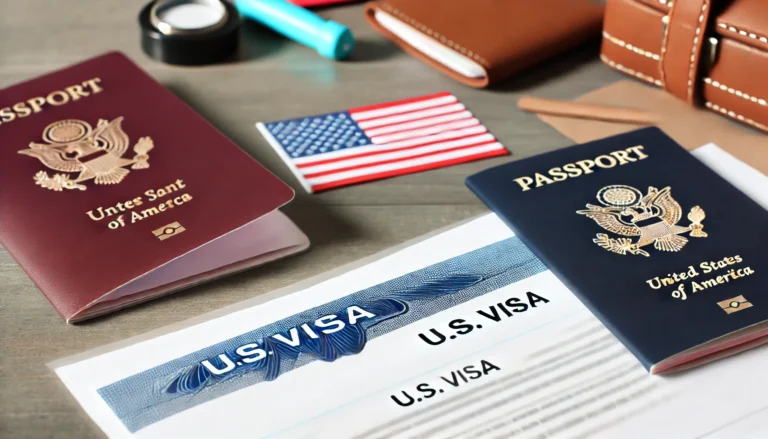Understanding Student Visas (F-1, M-1, J-1)
Introduction
The United States offers several student visa categories for international students who wish to pursue their education in the country. These include the F-1 visa for academic students, the M-1 visa for vocational students, and the J-1 visa for exchange visitors. Each visa category has specific eligibility criteria, application processes, and restrictions. This guide will help you understand the distinctions and requirements for each type of student visa.
Understanding Student Visas (F-1, M-1, J-1)
F-1 Visa: Academic Students
What Is the F-1 Visa?
The F-1 visa is designed for international students who wish to enroll in an academic program at a U.S. institution. This includes:
- Universities and colleges
- High schools
- Language training programs
Eligibility Requirements
To qualify for an F-1 visa, you must meet the following criteria:
- Admission to a SEVP Institution: You must be accepted by a Student and Exchange Visitor Program (SEVP)-certified school in the U.S.
- Full-Time Enrollment: You must plan to attend the institution as a full-time student.
- Financial Support: You must prove that you have sufficient funds to cover tuition and living expenses while studying in the U.S.
- Intent to Return: You should demonstrate your intention to return to your home country after completing your studies.
Application Process
- Receive Form I-20: After being accepted, your school will issue you a Form I-20, which is required for the visa application.
- Pay the SEVIS Fee: You must pay the Student and Exchange Visitor Information System (SEVIS) fee before your visa interview.
- Complete the DS-160 Form: Fill out the Online Nonimmigrant Visa Application (Form DS-160).
- Schedule and Attend an Interview: Schedule an interview at your local U.S. Embassy or Consulate and bring the necessary documents, including your Form I-20, visa fee payment receipt, and financial documents.
Duration of Stay
F-1 students can remain in the U.S. for the duration of their studies, plus a 60-day grace period to prepare for departure after completing their program. If you wish to extend your stay or change your program, you must apply for an extension through your school.
M-1 Visa: Vocational Students
What Is the M-1 Visa?
The M-1 visa is intended for students pursuing vocational or non-academic programs in the U.S., such as:
- Technical courses
- Occupational training
- Non-academic programs
Eligibility Requirements
To qualify for an M-1 visa, you must meet the following conditions:
- Admission to a SEVP Institution: You must be accepted by a SEVP-certified vocational or technical school.
- Full-Time Enrollment: You must enroll in a full-time program and maintain your status.
- Financial Support: You must demonstrate adequate funds to cover your tuition and living expenses.
- Intent to Return: You should plan to return to your home country after completing your studies.
Application Process
The application process for an M-1 visa is similar to that of the F-1 visa:
- Receive Form I-20: Your vocational school will provide you with Form I-20.
- Pay the SEVIS Fee: Pay the SEVIS fee before your visa interview.
- Complete the DS-160 Form: Fill out the Online Nonimmigrant Visa Application.
- Schedule and Attend an Interview: Attend your interview with the required documents, including Form I-20, proof of financial support, and payment receipts.
Duration of Stay
M-1 students can stay in the U.S. for the duration of their program, plus a 30-day grace period for departure after completing their studies. Extensions may be available under certain circumstances.
J-1 Visa: Exchange Visitors
What Is the J-1 Visa?
The J-1 visa is designated for exchange visitors participating in programs that promote cultural exchange and collaboration. This category includes:
- Student exchange programs
- Research scholars
- Trainees and interns
- Professors and teachers
Eligibility Requirements
To qualify for a J-1 visa, you must meet the following criteria:
- Sponsorship: You must be sponsored by an approved organization or institution in the U.S. that is part of the J-1 Exchange Visitor Program.
- Cultural Exchange Goals: Your program should promote cultural exchange and understanding between the U.S. and your home country.
- Intent to Return: You should demonstrate intent to return to your home country after your program ends.
Application Process
The application process for a J-1 visa includes the following steps:
- Receive Form DS-2019: Your program sponsor will issue you Form DS-2019, which you need for the visa application.
- Pay the SEVIS Fee: Pay the SEVIS fee prior to your visa interview.
- Complete the DS-160 Form: Fill out the Online Nonimmigrant Visa Application.
- Schedule and Attend an Interview: Attend your visa interview with the necessary documents, including Form DS-2019 and proof of financial support.
Duration of Stay
The duration of stay on a J-1 visa varies based on the program, ranging from a few months to several years. Some J-1 visa holders may also be subject to the two-year home residency requirement after their program.
Important Tips for Student Visa Applicants
- Start Early: Begin your visa application process as soon as you receive your acceptance letter to ensure you have ample time for interviews and paperwork.
- Prepare for the Interview: Practice common interview questions and be ready to discuss your educational goals and plans.
- Maintain Your Status: Once in the U.S., ensure you maintain your visa status by following all regulations and maintaining full-time enrollment.
- Understand Work Limitations: F-1 and M-1 students have specific restrictions regarding employment. Consult your school’s international student office for guidance.
- Consider Health Insurance: Health care in the U.S. can be expensive. Consider purchasing health insurance to cover medical expenses while studying.
Conclusion
The F-1, M-1, and J-1 student visas provide essential pathways for international students to pursue their educational goals in the United States. By understanding the eligibility requirements, application processes, and key considerations for each visa type, you can better navigate the path to studying in the U.S.
For more information on student visas, visit the U.S. Department of State’s website.

